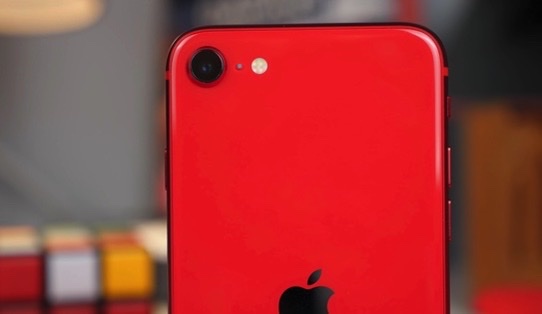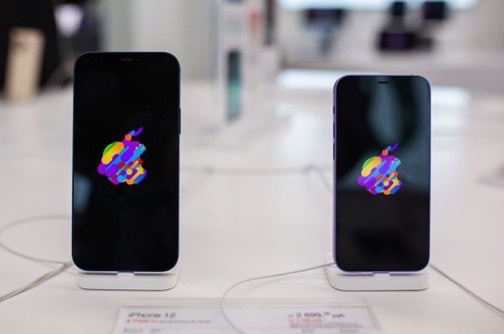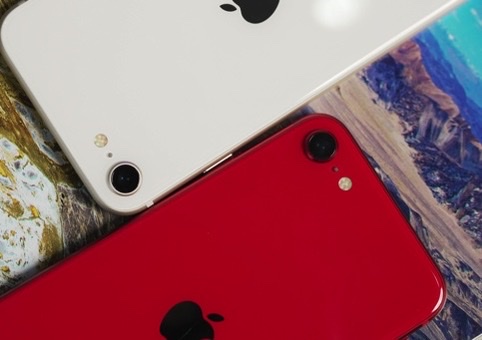Earlier in March, Apple announced several new products and updates, including a redesign of their entry-level iPhone, the iPhone SE. This is the first update to the iPhone SE in two years. The last version was released in 2020. Today, we’re diving deep into the new iPhone SE to help you determine if it’s worth upgrading or switching from your current phone, or if the changes are too incremental for it to be worth it.

iPhone SE 2022: External Design
Externally speaking, there are no differences between the 2020 iPhone SE and the 2022 iPhone SE. Your old iPhone SE case will even fit the new phone! The phone still has the same dimensions, 2.65 by 5.45 by 0.29 inches, although it weighs a little more (5.22 ounces vs. 5.09 ounces for the old version), but most people won’t notice such a negligible difference. The external design also keeps the large side bezels that have been around since the iPhone 8 dropped in 2017, a full five years ago, which can make it feel a bit outdated compared to the other iPhones that have been updated since then.
Keeping the same physical dimensions means that the LCD screen stays the same size: 4.7 inches long with a 1,334-by-750-pixel resolution and 625 nits of maximum brightness (don’t forget to cover it with an iPhone screen protector to prevent cracks!). The two cameras are also the same as the last iPhone SE, a 7MP f/2.2 camera on the front and a single 12MP f/1.8 camera with 4K video recording on the back.
The latest SE keeps the physical home button at the bottom of the front screen, as well as the Touch ID function, but it still lacks an external headphone jack. The entire phone has an IP67 waterproof rating, the same as last time. The 2022 iPhone SE also lacks the MagSafe capabilities that other iPhones have, but it does offer wireless charging. Basically, the newest iPhone SE will look and feel like the old one when you have it on your hand, and the placement of the hardware means that you don’t need to update your iPhone case unless you want to.

iPhone SE 2022: Internal Processors
At this point, you are probably wondering why Apple bothered to release a new iPhone SE at all when it is exactly the same on the outside. That’s because pretty much all the updates to this phone model were made to the internal processors, which got a huge upgrade and are much more powerful now. The iPhone SE now has an A15 Bionic processor, which is the exact same one used in the much more expensive iPhone 13S.
This means that the SE can now run the most demanding apps and offers more battery life to boot — about two extra hours compared to the old SE model, for a total of 15 hours. The iPhone 13 still has more battery life, so serious power users who are on their phones all day might find that the iPhone SE won’t last as long as they need it to, but more casual users will be pleased with this jump in battery life. The improved processor also results in clearer, crisper photos even though the camera hardware hasn’t been upgraded, which is a nice perk.
The newest iPhone also offers 5G capabilities, thanks to an upgraded chip. The previous SE version only supported up to 4G. (For those who want the nitty gritty specifics, the new iPhone SE supports Sub-6 5G, and not mmWave.) Depending on your cell phone carrier and where you live, moving to 5G can improve connection speed, ease congestion and improve your coverage. Right now, these improvements are most noticeable if you have Verizon or T-Mobile, although AT&T is also actively improving their 5G coverage.
That being said, the 5G capabilities and speed offered by the iPhone SE still lag when compared to the other iPhones on the market, including the iPhone Mini. However, each of these other iPhones represents a large cost compared to the iPhone SE. The SE has a price tag of $429, while the next cheapest, the iPhone 13 Mini, rings up at $799, a very significant price jump of $370. If you are looking for a budget iPhone that gets you 5G capabilities, the latest iPhone SE is your pick.

iPhone SE 2022: Should You Buy It?
There are several factors that play into whether or not upgrading to an iPhone SE is worth it for you. If you have the old SE and like the hardware design, but want better battery life and a faster processor, the upgrade might be worth it for you. Same goes if you want that 5G capability on an iPhone at an entry level price and currently have Verizon or T-Mobile as your cell phone carrier (most AT&T customers won’t notice a significant change until the company expands its 5G coverage later this year and into 2023).
Speaking of price, there’s no denying that the iPhone SE is Apple’s most affordable phone. If you must have an iPhone, but you’re on a budget, the iPhone SE is the phone to get and it will save you $370 vs. the next cheapest iPhone. It’s hard to argue with that math.
If price is not a concern, but you definitely want a smaller iPhone, it might be worth looking into the iPhone 13 Mini instead. Not only is it the smallest iPhone available, it’s one of the smallest smartphones on the market. However, it has a bigger screen than the SE (5.4 inches) due to getting rid of the home button and expanding the all-touch OLED screen to cover the whole phone. It also boasts upgraded cameras, including two lenses on the back vs. the iPhone SE’s single camera. The Mini also has two more hours of battery life than the SE (17 hours vs. 15 hours).
Of course, there’s always the iPhone 13 and iPhone 13 Pro for power users who want the biggest screens and best battery life available. If you’re willing to wait for the best of the best, Apple will likely be releasing the iPhone 14 this fall. But if you want a solid budget pick within the Apple ecosystem, the latest iPhone SE is a worthy update to consider.
This post is part of a sponsored content series, but falls in line with our TLS values and ethics.







